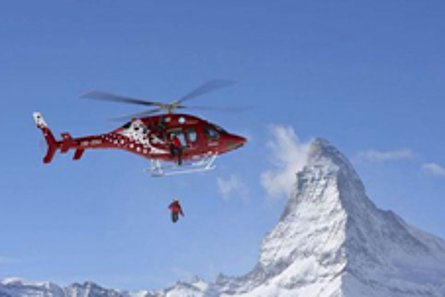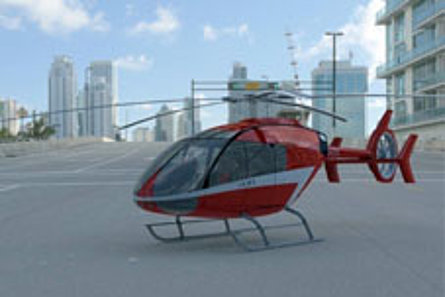
2011
6 March – The Swiss company Marenco Swisshelicopter Ltd, founded in Niederurnen/GL in 2008, unveils the full-scale mock-up of its SKYe SH09 during the Heli-Expo organized in Orlando/Florida, the most important annual fair fully dedicated to the rotary wing sector.
The 3 million US dollars 7 passengers helicopter will be powered by a FADEC-controlled Honeywell HTS900 (ratings: 611/820 kW/shp at takeoff, 564/756 kW/shp max continuous) and cruise at 270 km/h (145 knots).
The company plans to fly its first prototype next year.
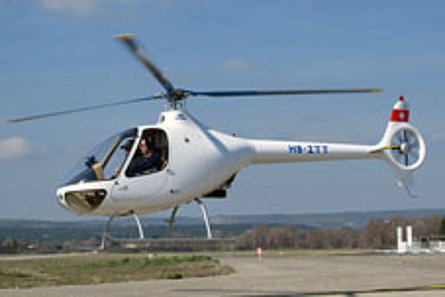
10 March – For the first time a helicopter Guimbal Cabri G2 is registered in Switzerland. The new aircraft receives the Swiss registration HB-ZTT. The two place which belongs to the Helibale Gmbh is based at the airport of Basel where it is mainly used by the Helitrans company for the school. It incorporates innovative technologies and offers a unique combination of maneuverability and stability.
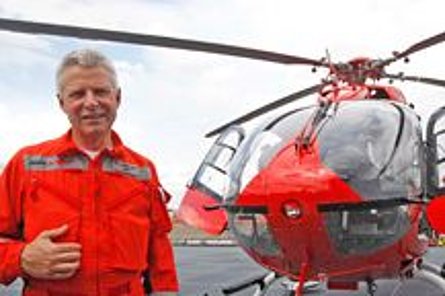
27 September - Rega’s Chief Helicopter Pilot Heinz Leibundgut receives the Aerosuisse Award in recognition of his outstanding achievements. With this prize, Aerosuisse – the umbrella association of the Swiss aviation and aerospace industry – pays tribute to Leibundgut’s untiring efforts to increase flight safety and develop new technologies.
For many years, Heinz Leibundgut has been actively involved in improving helicopter flight safety and reliability, particularly in the sphere of air rescue. Among other things, he worked closely with other partners to launch the highly successful "Remove" project, a free service aimed at dismantling redundant air navigation obstacles that pose a hazard to helicopter pilots.
Leibundgut has also been responsible for developing the concept of all-weather GPS approach flights to hospital helipads, which is currently in its introduction phase.
Heinz Leibundgut has held the position of Chief Pilot of Rega's helicopter fleet since 2000, and has over 30 years' experience in the field of helicopter flying.
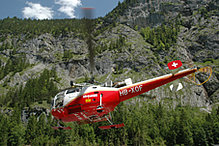
2014
June 18 - After nearly 49 years of uninterrupted flight activity with the helicopters of the SE 3160 Alouette III series Air Glaciers dismisses its last aircraft of this type.
Bruno Bagnoud, founder and director of the Valaisan company, poses in Sion for a picture next to HB-XOF "de facto" the last Alouette III used in the Swiss Alps for commercial flights.
Air Glaciers was the first helicopter operator in Switzerland to employ this legendary helicopter very much loved by its crews.
The first, registered HB-XCB, was transferred in flight from Marignane (France) by the famous glaciers pilot Hermann Geiger who landed in Sion August 3, 1965.
Some weeks before its official retirement Air Glaciers organized in Sion and Lauterbrunnen scenic flights to give a last chance to all the fans who wanted to take a ride.
For SAR operations Air Glaciers replaced the Alouette III with the EC-135T1.
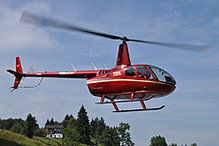
August 12 - Fuchs Helikopter based in Schindellegi/SZ is the first Swiss helicopter operator to receive the Robinson R-66. The helicopter registered HB-ZSF arrives in Switzerland from the Czech Republic piloted by chief-instructor Jonathan Brandt.
The Robinson R-66 is very similar to its predecessor (R-44), but instead of being powered by a piston engine it is equipped with a Rolls-Royce RR300 turboshaft that develops a maximum power of 221/300 kW/shp, reduced to 199/270 kW/hp for takeoff and 165/224 kW/hp continuous.
The Robinson R-66, whose selling price is about 839,000 dollars, received the type certificate from the European Aviation Safety Agency (EASA) May 2, 2014 four years after the certification issued by the FAA.
To date, Robinson has delivered over 500 R66s and estimates total fleet hours at over 160,000.
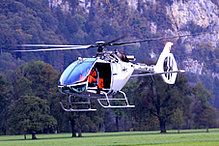
2 October - The helicopter SKYe SH09 HB-ZXA designed by Marenco Swisshelicopter successfully achieves first test flight on the airport of Mollis (Canton Glarus). With chief test pilot Dwayne Williams at the controls the prototype performs five short hover flights logging 20 minutes in the air.
Martin Stucki, designer, founder and CEO is pleased to inform that the first flight had confirmed the preliminary flying and handling characteristics of the aircraft.
The SKYe SH-09 features a full composite airframe as well as all-composite main rotor and tail rotor blades. The helicopter is designed to carry one pilot and up to seven passengers and is powered by 750/1,020 kW/hp Honeywell HTS900-2 turboshaft engine.
Marenco Swisshelicopter AG already holds over 50 orders and agreements on the new aircraft.
2018
June 21 - Swiss Air-Rescue Rega officially take possession of the first two of a total of six new H145 rescue helicopters from Airbus Helicopters at the Franco-German manufacturer’s works in Donauwörth, Germany. The newest generation of rescue helicopters was ordered in 2016, and the first two will be based in Berne and Basel. Rega plans to replace its entire lowland fleet of six Airbus Helicopters EC 145 rescue helicopters with the successor model, the H145, by the middle of 2019.
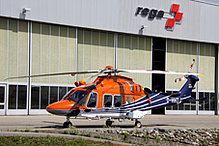
2020
17 August - In view of the purchase of new AW169 helicopters, the Rega project team carry out a week of tests in Switzerland with AW169 D-HHTJ helicopter leased from the German company Heli Service International GmbH.
Although this model is not equipped with an anti-icing system, its dimensions and avionics correspond to those of the future Rega AW169-FIPS helicopter and it is therefore somewhat larger and heavier than Rega’s H145 and Da Vinci helicopters. During the week-long trials, a Rega crew simulate various types of operations, including those in the mountains using a winch and in wooded terrain. The rehearsals also include flying according to instrument flight procedure or entering the hangar at a Rega base. Thanks to the knowledge gained, the project team defines and assimilates specific procedures for the new rescue helicopter in parallel with the development of the helicopter, such as the winch procedure.


